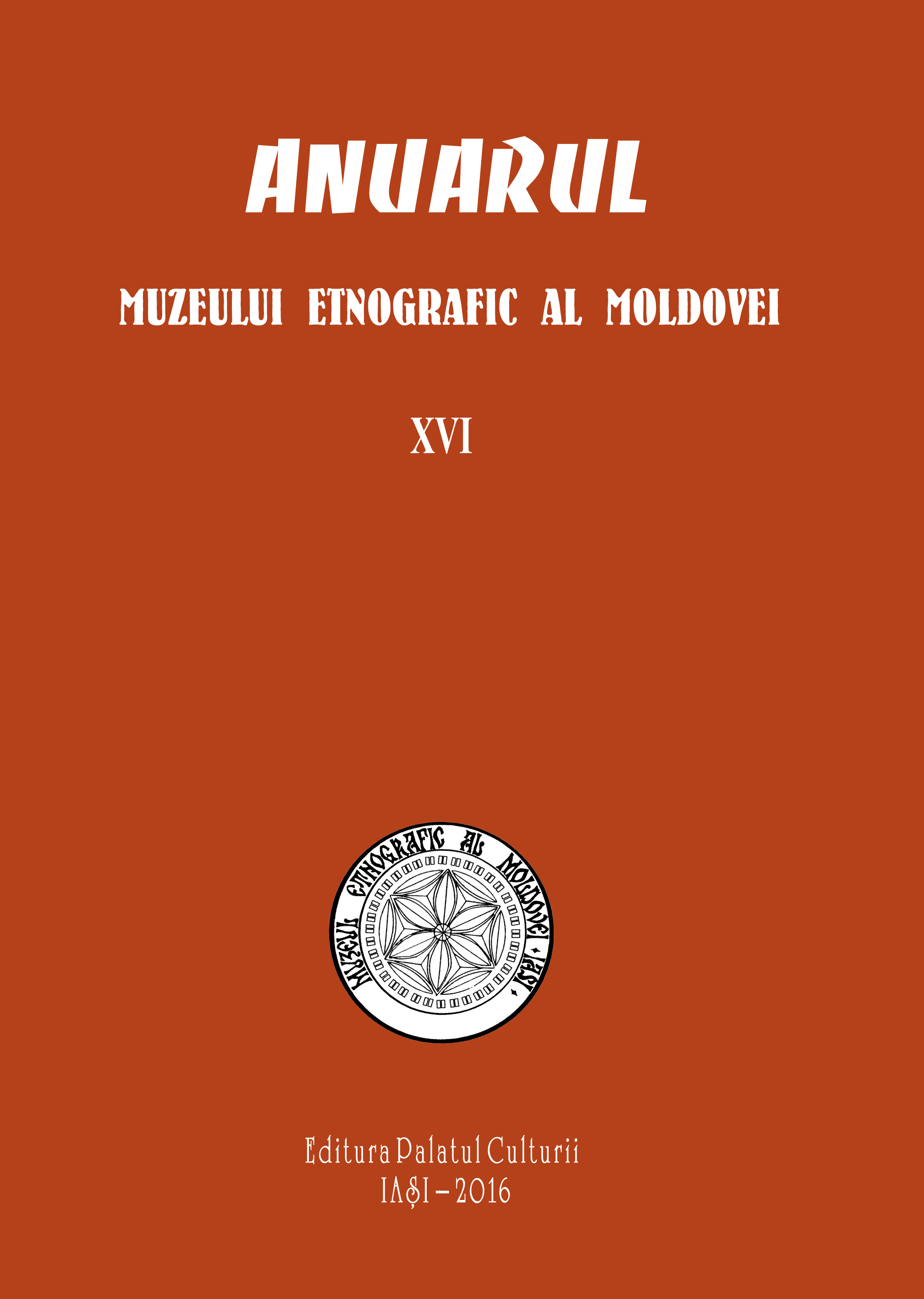Trăgătorii cu coarne aurite între cotidian şi mitologie
Golden Horn Plough Pulling Animals Between Everyday Life and Mythology
Author(s): Silvia CiubotaruSubject(s): Cultural Anthropology / Ethnology
Published by: Editura Palatul Culturii
Keywords: “arator” (Latin; meaning both the ploughman and the plough pulling ox); ox; wooden vat; divine ox; “buhai” (music instrument used in caroling; producing a sound similar to the roar of a bull); “strămu
Summary/Abstract: The present study recomposes the historical and mythological roots of the Romanian folk motif the miraculous pair of plough pulling oxen. Since the second wave of Indo-European populations that introduced the yoke and the plough pulled by oxen, until the Middle Ages, the cult of ideal plough pulling animals has developed specific customs. The ancient Greece’s Bouphonia is still to be recalled in the cortege of the Embellished Ox performed at Rusalii or in the New Year’s Eve animal masks.The ideal pair of the geminate oxen cutting the abundance furrow is multiplied in the agrarian folk poetry Plugușorul. In spells it has apotropaic properties, while in fairytales it possesses supernatural powers, having the day celestial body located between horns.In the historical region of Moldavia, the aurochs and especially the ox become emblems of the founding of the national state. Their effigies are met on coat of arms, princely seals, boundary pillars and flags.
Journal: Anuarul Muzeului Etnografic al Moldovei
- Issue Year: 2016
- Issue No: 16
- Page Range: 143-176
- Page Count: 34
- Language: Romanian

